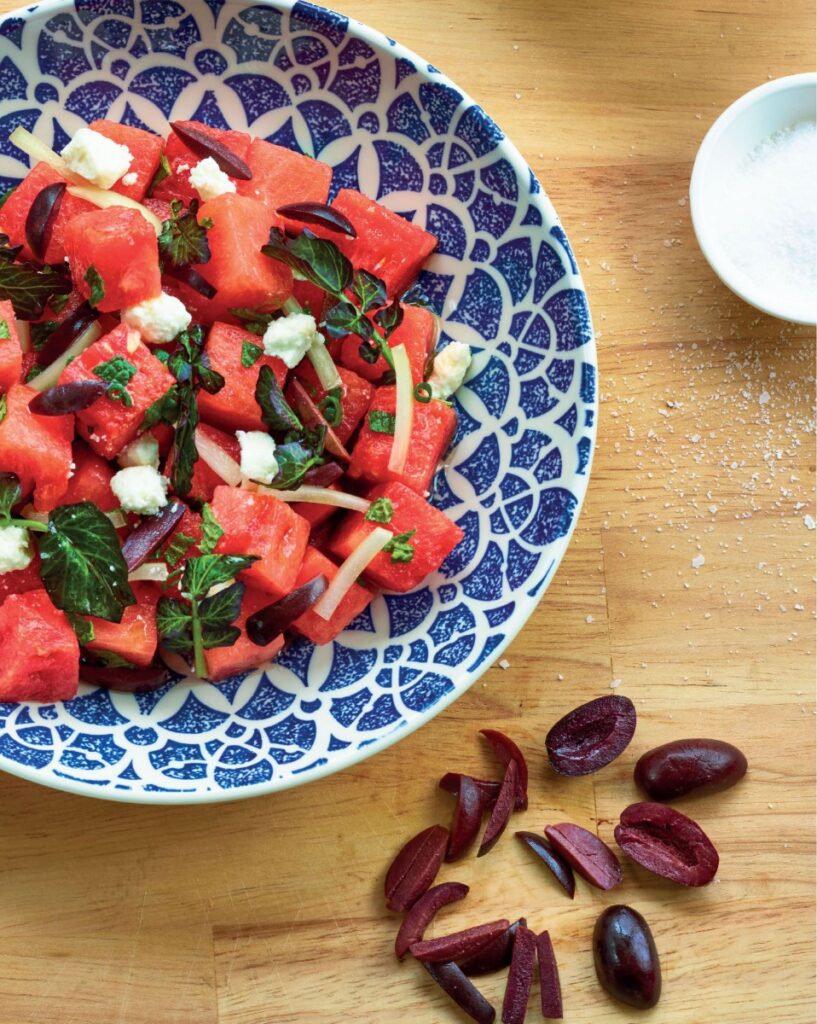“José Andrés needs no introduction. But long before his global recognition as the founder of World Central Kitchen — a disaster relief non-profit that has responded to crises all over the world – and a Nobel prize nomination, he gathered accolades for his two restaurants in Washington DC.
Jaleo opened in 1993, with a traditional but creative Spanish menu that earned a place in the Michelin Guide and the first of many James Beard awards for Andrés. Zaytinya opened in 2002 with a focus on Turkish, Greek and Lebanese cuisines and quickly received its own Michelin nod. Both restaurants featured small plates – tapas in Spanish, meze in the Mediterranean and Middle Eastern culinary lexicons — a style of dining that Andrés is credited with introducing to American restaurant patrons.
There are now additional Zaytinya locations in Miami, Las Vegas and New York City. Zaytinya the cookbook hit the shelves in March 2024.
Zaytinya: Delicious Mediterranean Dishes from Greece, Turkey, and Lebanon opens with a Foreword by Aglaia Kremezi, who is one of the foremost authorities on Greek cuisine and author of several excellent cookbooks of her own, and who partnered with Andrés in creating the Zaytinya restaurant concept. The two cooks travelled throughout the Mediterranean and Middle East, hunting down the finest ingredients and learning the secrets of home cooks, restaurant owners and street food vendors. Photos from their travels interspersed throughout the book are so colourful and vibrant they promise great things will come to the table.
In his Introduction, Andrés describes a moment eating street food in Istanbul as “where I love to be, with one foot in the old and one foot in the new — eating an old recipe that survives in the hands of a young cook.” Andrés is fascinated by the deep historical connections linking the cultures of the region, from the birth of Western civilisation in the Fertile Cresent, to the domination of the Ottoman Empire, to the modern period of political instability and cultural division. Food traditions, he believes, transcend borders and his desire is to honour the shared culinary heritage of the region while bringing fresh creativity to ancient dishes and ingredients.
Sharing plates are now commonplace on restaurant menus and it’s a style of eating that I enjoy, because it allows me to taste several dishes from a menu and because it enhances the shared experience of dining out, stimulating discussion about the food and reminding us that each of our palates is unique.
Nearly all the recipes in Zaytinya are designed for sharing between four or six, with only a few requiring individual plating. The book is divided into eleven chapters, starting with Fundamentals and Flavors, which covers ingredients, spice mixes and recipes for pickles and condiments; the subsequent chapters are divided by dish type – Spreads, Sauces & Cheese; Salads & Soups; Breads & Phyllo; and so on, through to Sweets, Tea & Coffee; and Wines, Spirits & Cocktails. Chapter introductions and detailed recipe headnotes give the provenance of the dishes and a wealth of cooking tips and helpful instructions that make everything sound achievable. There is no fancy kitchen equipment required and techniques are simple and straight forward. Andrés’ voice is warm and encouraging and recipes are clearly written. There is something for every level of cook – from easy dishes packed with flavour that will fill beginners with confidence and a sense of achievement, to detailed recipes designed to teach new skills like mastering manti (dumplings) and Turkish pide bread. Flexibility is built into the recipes – if you are missing a particular ingredient, says Andrés – don’t let it stop you from making a dish. The results will be slightly different, but if the ingredients are good and they are treated with care, the result will still be delicious.
The secret to the success of Zaytinya (the restaurant and the cookbook) is a focus on the best ingredients, and an approach to flavour that is guided by tradition but not bound by it. The result is a collection of recipes that are both familiar yet very contemporary, with a unique stamp that in Andrés’ restaurants has become known as “José’s way.”
The first dish I cooked — Buttery Shrimp with Dill — was a resounding success. Essentially shrimp in a beurre blanc, this is a restaurant-quality dish that is ever so simple to pull together. And if you are not familiar with the mounting technique – whisking in cold pats of butter to emulsify the sauce – Andrés’ instructions make it a breeze. The shrimp are the stars of the dish so it‘s advisable to use the best you can find. I used wild caught Royal Reds from the Gulf of Mexico which gave the butter sauce a lovely orange tint. A dash of hot sauce (not in the recipe), for me at least, took an already splendid dish up a notch even further.
Also good — Cypriot Potatoes — a simple preparation of baby potatoes that delivers a lot of flavour and introduces the crunchy pleasure of whole coriander seeds.

Kolokythokeftedes (such fun to say!) are zucchini fritters. They are superbly tasty – and tricky to cook. Most recipes for zucchini fritters have you squeeze the excess moisture out of the grated zucchini so the batter will stick together. Andrés omits this step and the mixture was so soft that turning the fritters was nigh impossible without them falling apart. I would certainly make these again because they are delicious, but next time around I will squeeze the zucchini dry. Cheese, flour, panko breadcrumbs and two egg whites also go into the batter – I’d be inclined to use whole eggs next time, to increase the binding ability of the batter even more.

Watermelon and Feta Salad is a snap to make, especially if you follow Andrés suggestion and buy a tub of watermelon cubes instead of the whole fruit. With fresh mint, black olives and briny feta, its a zippy, refreshing salad that looks beautiful to boot.
Zeytinyaği is the Turkish word for olive oil and there is a LOT of it in Spiced Tomato Sauce, a rich and silky sauce that is used in many different ways, from a topping for flatbread to a cooking and finishing sauce for meat, seafood and vegetables. The spices are cinnamon, bay leaf and dried oregano and the tomatoes are mix of fresh and canned – a clever ruse that ensures a deep flavour even when tomatoes are not at their ripest peak. The finishing touch is a half cup of extra virgin olive oil drizzled into the sauce (in addition to a quarter cup used in the cooking), which imparts a very smooth mouth feel. I didn’t add the full half cup of oil as the sauce tasted plenty oily with just a quarter cup drizzled in. And since I planned to use the sauce with Meatballs in Spiced Tomato Sauce, I was afraid the finished dish would be overly rich. The meatballs, made from ground beef, spiced with cumin and garlic, are browned in a skillet then simmered in the tomato sauce. The dish is intensely flavoured and I was glad that I had made a slightly lighter version of the sauce.

I finished up with Menemen – Turkish scrambled eggs mixed into in a sprightly tomato sauce enlivened by sumac, smoked paprika and Aleppo pepper — and Htipiti (tee-pee-TEE), a Greek roasted red pepper and feta spread. Half the pepper mixture is pureed in a blender and the other half left chunky. The combination of two different textures is the magic, the colour is gorgeous and the flavours really zing.
Elevating humble but carefully chosen ingredients with good technique is the key to Andrés’ success. The recipes in Zaytinya deliver flavour in spades and teach fundamentals of technique that bring restaurant quality dishes well within the reach of home cooks. This one’s a winner, destined to become a food-spattered favourite in my kitchen.


